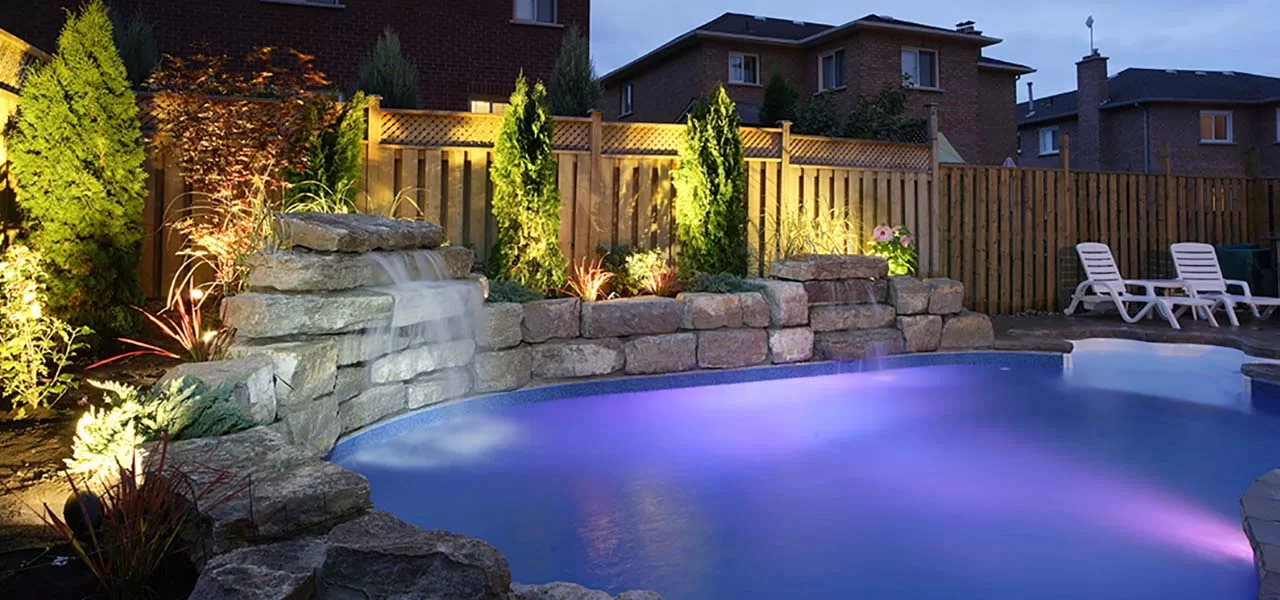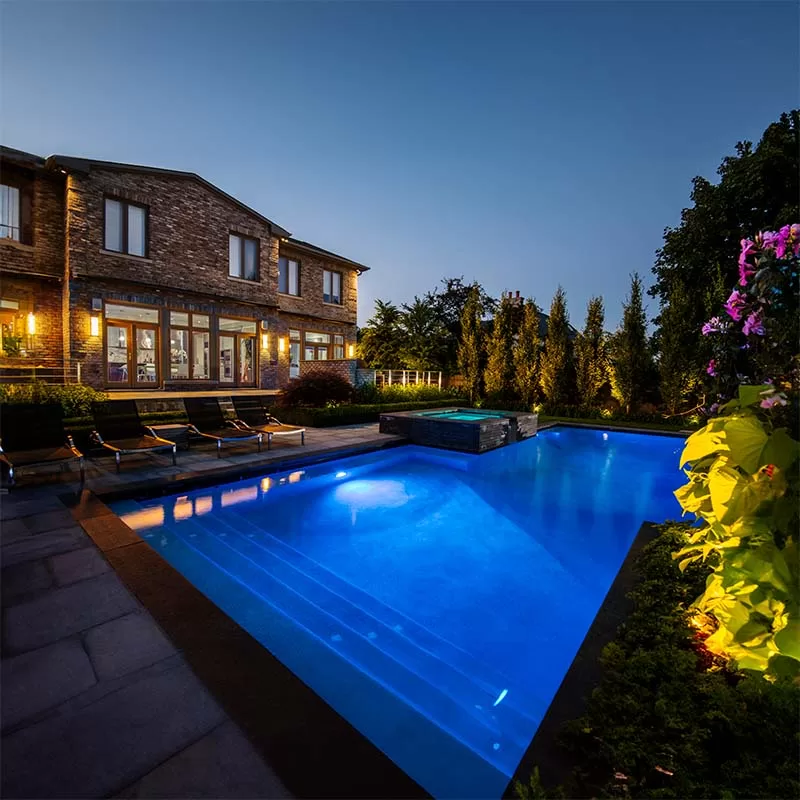FREE Standard Shipping On All Orders $100 or More!*

Convert Your Pool Light to Color LED Pool Lighting
Modern pools use high-intensity, low-energy LEDs. Not only are LED pool lights brighter, but they can save 80 percent of pool lighting costs. But wait, there's more! LED pool lights create deep, rich colors in thousands of combinations, and can be synchronized and choreographed for a rock ’n’ roll style pool light show!
Benefits of LED Pool Lighting
- LED lamps last up to 20 times longer than R-40 bulbs
- Low temperature LEDs are cool to the touch
- LED lights use up to 80 percent less electricity
- Safer lamps are all plastic and low voltage
- Deep hues really make your pool pop
Selecting the Correct LED Pool Light

You'll need the proper LED pool light to fit into your light niche. The light niche is the sideways "bucket" that holds the pool light into the wall. At the rear of the light niche is a hole for the light cord to run through as it exits the niche and runs in a conduit pipe over to the junction box, where it connects with the power source.
Not all LED pool lights will fit in all pool light niches. If you have a Pentair light, you can use the Pentair IntelliBrite LED pool light. If you have a Hayward pool light, you can use the Hayward ColorLogic LED pool light.
Or you can use the Hayward Universal LED pool light. This lamp will fit pool light niches by American, Anthony, Hayward, Pac-Fab, Paragon, Pentair, Purex, Sta-Rite and Swimquip. It's universal because it will fit into most any other pool light niche. Unlike other lamps that void the warranty or remove the UL listing when installed in other niches, the Hayward Universal LED pool light is UL listed as safe for use in nearly any light niche.
Hayward Universal ColorLogic Pool Light
The Hayward Universal ColorLogic pool light is cheaper than the standard ColorLogic LED pool lights, but there may be a small additional expense. Universal ColorLogic lights are available only in 12 volts; they don't make a 120V version. This is another reason, in addition to the all plastic construction, that the Universal Color Logic is able to be UL listed.
Twelve volt lights are just as bright as 120V lights, and in fact, the Universal ColorLogic LEDs are up to twice as bright as current LED pool lights, and they're safer to use.
In most parts of the country, you can use 120V or 12V pool lights. In some areas, local code requires a 12V pool light to be used. If you have a 12V light, you will have a transformer installed by your time clock, which looks like the one pictured here.
A transformer reduces voltage, from a higher voltage to a lower voltage. Pool light transformers reduce the voltage from 120V down to 12 volts to power low voltage, 12V pool lights. If you have this already because your area requires 12V pool lights, then you're all set!
Installing a Pool Light Transformer
If your current pool light is a 120V pool light, then you'll need to have an electrician install a transformer between the power source and the junction box. The Junction Box, or J-box as it's sometimes called, is the point where the wires from the pool light meet the wires from the breaker box. The ends of the wires are usually connected with wire nuts. J-boxes are commonly located off the pool deck and raised a foot above the ground.
Installing the J-Box Retrofit Kit
An easier, cheaper and faster method by far is to use the Hayward J-Box Retrofit Kit, which allows you to insert a small transformer directly into the junction box. Purchase the Retrofit Kit that matches the manufacturer of your J-box.
If you are replacing several pool lights with Universal ColorLogic lights in your pool, it may be cheaper and easier to have an electrician install one standard pool light transformer, back by the circuit breaker box.
Installing the Universal Hayward ColorLogic LED Pool Light
After removing the single screw, you should be able to wiggle the light free from the light niche, and unless it's full of water, it should pop up to the surface. Place the lamp to the pool deck and cut the wire behind the pool lamp. Make sure the power is off at the switch and breaker and use wire snips to cut through the wire.
Locate the light junction box and remove the lid. Loosen the clamp holding the other end of the pool light cord and begin pulling the wire up until it all comes out. Then insert a fish tape into the conduit and push it in until it comes out through the light niche.
Wrap the new cord wire tightly around the end of the fish tape and pull your new cord through. Leave enough cord on the pool side to allow you to bring the LED pool light up on the pool deck in the future and cut the excess cord off at the other end, about 6 inches above the junction box.
Wire your new Hayward universal color LED light into the J-Box Transformer or to wires connected to a transformer back by the pool electrical panel. Then close your junction box.
The next step is to insert the universal LED light into your existing niche. For some Pentair niches, you may need to use a spacer, and for some Sta-Rite or Swimquip niches, the bottom tab may need to be removed from the Universal ColorLogic light ring. After attaching and securing the new color led pool light into the niche, secure the trim ring as shown above.
Pool Light Show!
Now you're ready to test out your new color light shows! You can select any of seven pre-programmed dazzling light shows or set it on one of 10 single colors. If you add Hayward's Pro-Logic controller to your pool system, you will upgrade to 101 colors and 11 light shows. All are adjustable for speed, motion and brightness.
LED pool lighting is an easy way to reduce your pool's impact on the environment, and you'll also reduce the amount of money you pay to the electric company each month. LED pool lighting is also much cooler and more fun than traditional incandescent pool lights.
If you have other questions on converting your pool lights to LED Color pool lighting, see our pool lighting pages, or call one of illumination experts in our call center for a quick answer.